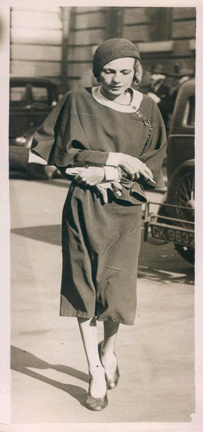Bela Lugosi was born Béla Ferenc Dezső Blaskó in Lugos, Kingdom of Hungary (now Lugoj, Romania), not far from Transylvania, 134 years ago today. Here are 10 BH Did-You-Knows:
- Lugosi was the youngest of four children; his father was a banker. He dropped out of school at age 12 and began acting, playing small roles in regional theatre, just after the turn of the 20th century. He moved to Budapest in 2011 and began working (though still limited to minor roles) with the National Theatre of Hungary.
- Lugosi volunteered to serve in the Austro-Hungarian Army during World War I; he served in the infantry, rising to the rank of captain in the ski patrol. He was injured three times.
- Coming under scrutiny for his activism in creating an actor’s union in Hungary during the 1919 revolution, Lugosi fled the country, first to Vienna and later to Berlin. He soon came to the United States, landing in New Orleans in December 1920 as a member of the crew on a merchant ship.
- Lugosi appeared in 12 motion pictures in Hungary 1917 and ’18 and in several more in Germany. Once in the United States, he made his way to New York, where he became active in Hungarian theatre. He made his Broadway debut in 1922 in the play The Red Poppy. His American film debut came in 1923 in The Silent Command. He would soon make several other pictures, all filmed in and around NYC.
- In 1927, Bela Lugosi was cast as Count Dracula in the Broadway production of a play adapted from Bram Stoker‘s novel. Lugosi was a sensation in the role, but he was not the top choice for the role of the Count as the play was being developed as a movie. Director Tod Browning hoped to cast Lon Chaney, a much bigger name than Lugosi and someone Browning had worked with frequently, in the role, but Chaney’s tragic death opened the door for Lugosi to play the role he’d made famous in the legitimate theatre.
- The film was a great success, and Lugosi soon realized that the role of Count Dracula was both a blessing and a curse, as he found himself quickly—and permanently—typecast as a horror star.
- Lugosi, who had worked to establish an actor’s union in Hungary, was one of the organizers of the Screen Actor’s Guild (he was member no. 28).
- Lugosi was married five times, with only one of the marriages lasting more than three years (Lugosi and his fourth wife, Lillian Arch, remained together for just over twenty years). His third marriage, to a wealthy San Francisco widow named Beatrice Weeks, ended after just a few days when Weeks discovered he was carrying on an affair with actress Clara Bow.
- By the late 1930s, Lugosi, who suffered from sciatic neuritis, was addicted to the painkillers morphine and methadone. He would struggle with his dependency on these drugs for the rest of his life, and his career would suffer because of it.
- Though a rumor persisted of a feud between Lugosi and fellow horror star Boris Karloff, both men’s children insisted that, though the two men weren’t close, there were no hard feelings between them. The two actors appeared in seven films together: The Black Cat (1934), The Raven (1935), The Invisible Ray (1936), Son of Frankenstein (1939), You’ll Find Out (1940), Black Friday (1940) and The Body Snatcher (1945).
Happy birthday, Bela Lugosi, wherever you may be!


